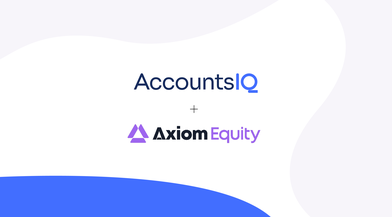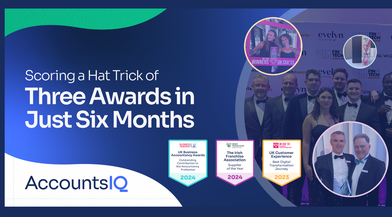
Does your business still prepare your consolidated accounts manually? Maybe you’ve acquired new subsidiaries or launched new group entities organically over a number of years. As a result, you may now be faced with late nights pouring over endless spreadsheets and doing repetitive tasks to consolidate their accounts. If so, you’re not alone.
Preparing group consolidated accounts is the top frustration for many group finance teams. Throw in the new world of flexible hybrid working and many finance teams are asking similar questions. For example:
- How can we consolidate accounts more efficiently?
- How can we work more collaboratively?
- Is there a better alternative to online spreadsheets that keep crashing; a platform where everyone can edit and make changes in real time?
This article answers many of the key questions around how to consolidate accounts and looks at ways group finance teams can simplify the process to become more efficient.
What are group consolidated accounts?
Group consolidation involves the merging of two or more business entities - in which all financial reporting treats a group of organisations as a single entity.
Which organisations need to prepare consolidated accounts?
Under company law and accounting standards, a group of companies must produce consolidated financial statements. This means that the financial statements for each of the members of the group are combined into one set, as if it was one entity. There are some exemptions from this rule. For example, groups classified as being in the ‘small’ threshold.
If you’re unsure about whether your group is legally required to prepare consolidated accounts, you should seek professional advice.
As with many other areas of accounting, these rules and regulations are there to ensure and encourage responsible business practice. However, compliance is by no means the only reason for consolidating accounts. From a business perspective, the real value of preparing consolidated accounts each month lies in delivering clear financial insights to the management team and other stakeholders.
What does group accounts consolidation mean?
For companies with subsidiaries, consolidating group accounts is a monthly challenge. There can be multiple variables to deal with, from partial ownership to multi-currency transactions. If your finance team is doing all this the traditional way, by exporting from your accounting systems into Excel spreadsheets, it’s stressful, time-consuming and – worst of all – error-prone.
What are the common issues with consolidating group accounts?
The 3 big issues with consolidating group accounts manually are:
- It’s time consuming, inefficient and error prone. Running complex consolidation formulae in Excel spreadsheets inevitably leads to errors and inaccuracies. These errors can be difficult to spot and time consuming to correct.
- Getting crucial company data to management teams, boards and shareholders in a timely manner.
- Finance teams find collaborative working extremely difficult if they are dependent on online spreadsheets.
A step-by-step guide to group consolidation
Most group finance managers now look to modern technology and software platforms to drive efficiencies and help them simplify the process of consolidating group accounts. Here’s a step-by-step guide to taking the stress out of your group consolidation.
1. Automate consolidation of multiple subsidiaries (including sub-groups)
Automated consolidation is the dream of group accountants frustrated by the cumbersome process of amalgamating accounts from multiple entities. Automation means you can collate, evaluate and update all subsidiary data accurately and quickly. With the right accounting software, even complex corporate structures can consolidate any number of subsidiaries’ datasets with ease. That includes sub-groups where the consolidated entity itself becomes a subsidiary of a large group consolidation.
2. Record intercompany loans
If the parent company has been consolidating the cash balances of its subsidiaries into an account that invests or gains interest, then intercompany loans should be recorded from the subsidiaries to the parent company. Any interest income allocation from these consolidated investments should be recorded from the parent company to the subsidiaries.
3. Enable foreign currency consolidations
Subsidiaries may need to operate in their own base currency. However, at group level, you’ll need to translate those results into the base currency of the consolidation entity. Group consolidation software makes this process straight-forward.
AccountsIQ, for example, correctly translates P&L accounts using average period rates, and Balance Sheet accounts using period-end rates. The Central Currency Management feature means you can maintain average and period-end exchange rates in multiple subsidiaries in one central table, that updates automatically.
4. Charge payables and payroll expenses
All accounts payable recorded during the consolidation period need to be appropriately charged to the subsidiaries. Payroll expenses also need to be correctly allocated to the various subsidiaries. This can be done in one click with appropriate accounting software, saving time.
5. Ensure group level management reporting
To view overall performance and trends, group companies need to be able to report on actuals vs budgets at both individual entity and group level. The ability to do this fast and accurately can quickly make your finance team a valued contributor to discussions about group strategy.
6. Post intercompany charges
Modern accounting software makes posting intercompany charges much simpler. With AccountsIQ, for example, you can raise intercompany sales invoices that automatically create purchase invoices in the receiving company. Purchase invoices remain “unposted” until approved and coded in the receiving company. This ensures that intercompany accounts remain balanced for elimination at group level, even if balances are in different currencies.
7. Manage currency revaluations
At month-end your team needs the ability to revalue foreign currency bank, debtor and creditor accounts at subsidiary level based on centrally maintained exchange rates. With AccountsIQ, unrealised gains (losses) are automatically posted, and the base currency value of assets and liabilities adjusted before consolidation. This facilitates elimination of intercompany balances at group level.
8. Manage complex ownership arrangements
Some groups will need to take account of minority interests liability (where the ownership interest is greater than 50% but less than 100%). AccountsIQ’s group consolidation software automatically recognises minority interests liability and creates relevant postings in the consolidation entity.
9. Post consolidation adjustments
Your finance team needs to be able to make adjustments at group level without affecting the subsidiary figures. This provides finance managers with powerful granular control.
10. Close books
It’s important to close the subsidiary and parent company books to flag that the accounting period has ended and the accounts have been consolidated. This prevents any additional transactions from being recorded after the consolidation, ensuring that all data is accurate.
11. Review and issue financial statements
Before sharing any financial statements, it is important to review the statements produced from the consolidated accounts of both subsidiaries and the parent company. Flag and investigate any items that appear unusual. Once happy with accurate financial statements, these can be distributed to the parent company.
Things to consider during group accounts consolidation
Many group finance teams are deciding that it’s time to move away from the risks and inefficiencies of using spreadsheets to consolidate group accounts. If that applies to you, the choice of how to handle your group accounts falls into two broad options:
- Add another tool to the existing accounting software as a workaround to the problem.
- Use combined accounting and group consolidation software, such as AccountsIQ, that enables you to create consolidated accounts and sophisticated group and individual entity management reports all on one platform.
"AccountsIQ’s main success for us has been the efficiency it has brought to the business. The product is a good fit for our pretty complex accounting requirements and AccountsIQ gives us real value for money. We can consolidate 80 entities in a few minutes."
Lee Camp, Finance Director, Salamanca Group
What business intelligence does your group need?
Another consideration when consolidating accounts is the level of reporting, analysis and forecasting your group needs, both now and in the future as you continue to grow. You don’t want to have to wait until all the manual, consolidation spreadsheets are reconciled, audited and pre-processed to get a clear view of your group’s financial position. Growing, ambitious companies need accurate and timely group data; not just financial records but actionable data on KPIs, financial modelling and scenario planning.
We’ve tackled this consolidated reporting problem in a unique way
By linking the subsidiary-level ledger codes to a common set of group summary codes, AccountsIQ cloud consolidation software allows your subsidiaries to benefit from individual local coding, while you retrieve and drill-down to the data you need. This gives you multi-dimensional analysis, such as by location, department, product or employee, with unified group reporting – all with just one click.
AccountsIQ also offers a library of over 250 pre-built reports and customised role-based dashboards to give you all the visibility and flexibility you need.
All this means you can consolidate your group accounts as often as you wish – no need to wait until month-end – to ensure you have real-time data for faster, more informed decision making.
How future-proof is your group’s finance system?
As your group continues to grow, your accounting needs will undoubtably change. For example, you might need to onboard new entities to your group structure, change the way you manage your reporting or integrate your accounting system with other technology, such as your CRM or your bank (under Open Banking legislation) to consolidate your Treasury position in real time. It’s always worth checking to see if the group accounting software you’re considering is designed to be flexible and future-proof with an open API as standard.
What’s the best group consolidating system for your finance team?
Last, but by no means least, consider the impact of implementing new software on your team. In our experience these change projects run smoothly when leaders engage and communicate with their wider team, and you have a supportive software partner to work with. In fact, team morale gets a major boost once you’re no longer reliant on repetitive manual processes, long hours reconciling discrepancies and complex workarounds.
When it comes to consolidating complex group accounts, we’ve never come across a finance team that feels nostalgic for their Excel spreadsheets.
Find out more about AccountsIQ’s Financial Consolidation Software and discover our multiple entity account consolidation checklist.



